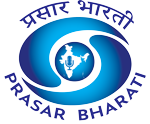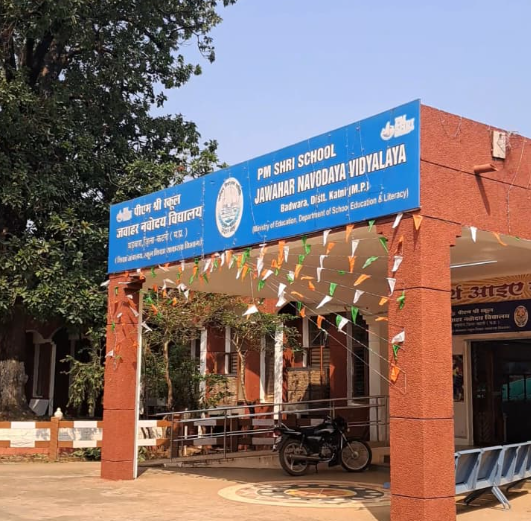India’s education system plays a vital role in driving the nation’s social and economic development. Within this landscape, the Kendriya Vidyalaya Sangathan (KVS) and the Jawahar Navodaya Vidyalaya Samiti (NVS) stand out as two key national school networks operating under the Ministry of Education.
KVS primarily serves the children of transferable Central Government employees, offering uniform and quality education while promoting national integration. NVS provides free, residential education to talented rural children, aiming to bridge the urban–rural divide. Together, they serve over 15 lakh students, aligning with the National Education Policy (NEP) 2020 goals of equity and quality.
Historical Context
KVS was established in 1963, evolving from the Central Schools Organisation (CSO) set up in 1962 to ensure uninterrupted education for children of government employees. Today, it operates 1,290 schools affiliated with the Central Board of Secondary Education (CBSE) and aligned with the National Curriculum Framework (NCF) 2023.
NVS was launched in 1986 under the National Policy on Education to nurture rural talent through free, residential schooling. Starting with two pilot schools, it has expanded to 662 operational Navodaya Vidyalayas as of October 2025. All follow the CBSE Class VI–XII curriculum and implement the Three Language Formula to promote multilingualism and cultural integration.
Urban Edge vs Rural Resilience
KVS and NVS both follow CBSE standards but serve different geographical and social contexts. KVS schools primarily operate in urban and semi-urban areas, catering to families that frequently relocate. They have evolved into technology-enabled campuses equipped with digital language laboratories, e-classrooms, and modern facilities that promote innovation and academic excellence.
NVS schools function in rural interiors, providing fully residential campuses that give underserved children access to quality education. Each district typically houses one Navodaya Vidyalaya, and so far 689 schools have been sanctioned under this model. KVS educates about 13.71 lakh students , while NVS accommodates around 3.10 lakh. Navodaya Vidyalayas use smart classrooms, digital laboratories, and hostel facilities to promote holistic growth and bridge educational gaps in rural areas.
Funding and Budgetary Support
The Central Government funds both systems in full. It allocates resources to KVS for infrastructure, staffing, and operations, while NVS funding focuses on maintaining residential campuses and constructing new schools in rural districts.
In the 2024–25 financial year, the government allocated Rs. 5,370.79 crore to NVS as Grant-in-Aid, alongside an opening balance of Rs. 585.34 crore and internal receipts of Rs. 44.70 crore, bringing the total available funds to Rs. 6,000.83 crore. This funding enables NVS to expand its reach and maintain consistent operations in remote regions.
2025 Milestones: Expansion and Inclusion
On October 1, 2025, the Union Cabinet approved 57 new Kendriya Vidyalayas with a total investment of Rs. 5,862.55 crore spread over nine years (2026–2035). The plan earmarks Rs. 2,585.52 crore for infrastructure and Rs. 3,277.03 crore for operational costs, targeting districts with limited educational facilities.
On December 6, 2024, the government sanctioned 28 new Navodaya Vidyalayas with an investment of Rs. 2,359.82 crore over five years (2024–2029), including Rs. 1,944.19 crore for capital expenditure and Rs. 415.63 crore for operations. These projects extend rural access to quality education and strengthen inclusivity.
Digital Transformation
Both KVS and NVS have embraced digital learning in alignment with NEP 2020. In October 2025, KVS implemented an updated ICT framework that equipped 90 percent of its schools with smart classrooms, AI-based adaptive learning tools, and virtual laboratories. Through platforms like DIKSHA, KVS now offers hybrid and personalised learning experiences for students and teachers.
NVS also accelerated digital integration in rural settings. Under the PM SHRI Project, it established 9,417 smart classrooms and 312 digital language labs, along with 200 additional labs through the CBSE CSR initiative. With 26,118 desktops and internet connectivity across all schools, NVS has dramatically improved digital access for rural students.
PM SHRI Scheme: Model Schools for the NEP Era
The government launched the Pradhan Mantri Schools for Rising India (PM SHRI) scheme in 2022 with a total outlay of Rs. 27,360 crore over five years (2022–2027) to transform 14,500 schools into NEP-aligned model institutions. Under this scheme, 913 Kendriya Vidyalayas have been upgraded with activity-based learning, eco-clubs, and student leadership programmes. Similarly, 620 Navodaya Vidyalayas have been designated as PM SHRI institutions, functioning as innovation hubs that promote digital learning, cultural exchange, and experiential education. These initiatives reinforce the multidisciplinary and flexible learning model outlined in NEP 2020.
Early Childhood Education: Balvatika and ECCE Integration
The NEP 2020 framework for Early Childhood Care and Education (ECCE) targets children aged 3–8 years, corresponding to the foundational stage of the 5+3+3+4 structure. KVS implemented this through its Balvatika programme, currently operational in 505 schools, offering three preparatory levels—Balvatika I, II, and III. The 57 new Kendriya Vidyalayas approved in 2025 will include Balvatika facilities, creating 13,680 pre-primary seats and reserving 3 percent for differently-abled children.
Although Navodaya Vidyalayas start from Class VI, they support ECCE goals by running remedial and bridging programmes that help students from varied rural backgrounds transition smoothly into formal education.
The Road Ahead
Kendriya and Navodaya Vidyalayas represent India’s ongoing commitment to inclusive and quality education. By expanding infrastructure, embracing digital innovation, and aligning with NEP 2020, these institutions continue to shape the next generation of learners, bridge the gap between rural and urban India, and strengthen education as a cornerstone of equity and nation-building.














